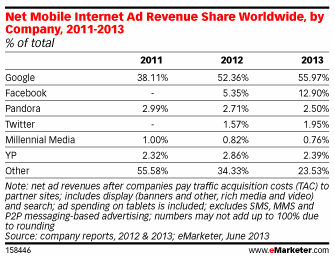Online trolls are simply bored, study finds
 Many brand managers ask themselves (and us in seminars) how a shitstorm begins. We most often tell them that many shitstorms are not real business problem but more a “verbal foul-mouthed fart” as we called it some weeks ago in one of the courses at the Executive Campus of the University of St. Gallen.
Many brand managers ask themselves (and us in seminars) how a shitstorm begins. We most often tell them that many shitstorms are not real business problem but more a “verbal foul-mouthed fart” as we called it some weeks ago in one of the courses at the Executive Campus of the University of St. Gallen.
However, it is obvious that trolling increased in recent years with the rise of Facebook pages, online communities and newspaper comment which spread across the web with insults and provocations. Now, a recent academic study by Dr Claire Hardaker of Lancaster University of almost 4,000 trolling cases states that internet trolls travel on the anonymity of the web and can come from all ages on backgrounds.
“Aggression, deception and manipulation are increasingly part of online interaction, yet many users are unaware not only that some of these behaviours exist, but of how destructive and insidious they can be. The image of trolling is that it is mainly the work of young people, but the fact is trolls come from all ages and backgrounds. They will use different strategies to trigger the response they want from people. Some of these are a lot sneakier than others. It is not just about personal abuse.” Dr Claire Hardaker, Lancaster University
In an article of the Journal of Language, Aggression and Conflict soon to be published, Dr Claire Hardaker warns that trolls have become more sophisticated. Still, she gives advice on how to identify troll attacks. She shows the detailed approach that trolls make use of and makes clear that the trigger is often amusement,
Here are the seven deadly sins of trolling and how they are effective
1) Digressing from the topic at hand, especially onto sensitive topics.
Not necessarily overtly argumentative, this tactic frustrates its targets with its pointlessness and circularity. Digression onto sensitive topics triggers the strongest reactions.
2) Hypocriticising, especially for a fault that the critic then displays themself.
A simple tactic, often this is pedantic criticism of grammar, spelling or punctuation in a post which itself contains proofreading errors to provoke exasperated responses from others.
3) Antipathising, by taking up an alienating position, asking pseudo-naive questions, etc.
This tactic is heavily reliant on deceiving the group it is aimed at and covertly manipulates egos, sensitivities, morals and feelings of guilt, usually to trigger emotional responses. It can also create moral dilemmas.
4) Endangering others by giving dangerous advice, encouraging risky behaviour, etc.
A trolling strategy designed to masquerade as help or advice whilst actually causing harm and/or forcing others to respond to prevent harm. It relies on the target’s social responsibility and moral obligation.
5) Shocking others by being insensitive about sensitive topics, explicit about taboo topics, etc.
This appears to succeed mainly due to the strength of feeling provoked by the deeply personal and extraordinarily hurtful nature of the troll’s insensitivity. It triggers a desire to retaliate that is stronger than the desire to deny the troll the satisfaction of a response.
6) Aggressing others by insulting, threatening, or otherwise plainly attacking them without (adequate) provocation.
This is open and deliberate aggression without any clear justification with the aim of antagonising its target into retaliating.
7) Crossposting – sending the same offensive or provocative message to multiple groups then waiting for the response.
Do you have any hints and tips how to work with internet trolls? Share them, we are sure most readers will enjoy your advice.




 There are different views on why
There are different views on why  Now, although mobile ad revenue is far from reaching big amounts of ad spendings, many marketers see it as a growth area. Whatever the number that is attached to total mobile ad revenue worldwide is, Google is the leader with over half of surveyed people according to eMarketer. And if you see the numbers it seems that Gogle is still not happy with the budget chunk they do get, reaching out for more it seems. But also Facebook investors will see some light at the end of the tunnel with mobile ads on the rise. However, Google might like the competition but all that market dominance simply making way for some more challenging competition.
Now, although mobile ad revenue is far from reaching big amounts of ad spendings, many marketers see it as a growth area. Whatever the number that is attached to total mobile ad revenue worldwide is, Google is the leader with over half of surveyed people according to eMarketer. And if you see the numbers it seems that Gogle is still not happy with the budget chunk they do get, reaching out for more it seems. But also Facebook investors will see some light at the end of the tunnel with mobile ads on the rise. However, Google might like the competition but all that market dominance simply making way for some more challenging competition.
